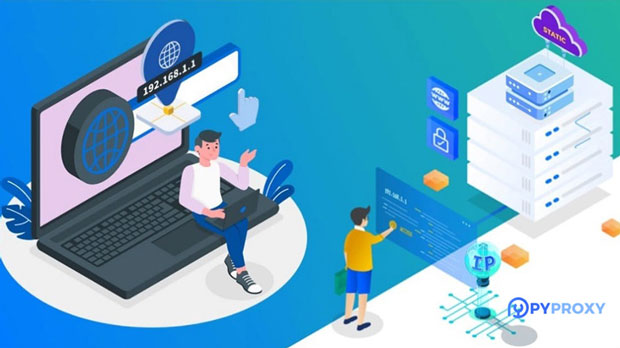When it comes to online privacy and security, the tools you choose to protect yourself can make a significant difference in your experience. Two commonly discussed options are socks5 proxies and VPNs (Virtual Private Networks). While both are used to change your IP address and bypass geographical restrictions, they serve different purposes and offer different advantages. If you're unsure which one is right for you, this article will dive deep into the benefits, drawbacks, and unique features of both SOCKS5 proxies and VPNs. By the end, you'll be equipped with the knowledge to make an informed decision based on your specific needs. What is a socks5 proxy?A SOCKS5 proxy is a type of internet protocol that allows data to flow between a client and a server through a third-party server. It operates at the application layer and acts as an intermediary between your device and the destination you wish to access. SOCKS5 proxies are designed to handle any type of internet traffic, such as web browsing, gaming, and file-sharing, without modifying or inspecting the content of the data. This makes them very fast and flexible.How Does SOCKS5 Work?The SOCKS5 proxy routes your internet traffic through a third-party server. It essentially works by forwarding your requests to websites, hiding your actual IP address in the process. This makes it harder for the websites you visit to trace your location or identity. The primary advantage here is that it doesn’t require encryption, which allows for faster speeds compared to other privacy solutions like VPNs.Unlike traditional HTTP proxies, which only work with web traffic, SOCKS5 supports a variety of protocols and applications, including email clients, peer-to-peer (P2P) services, and gaming. However, it’s important to note that SOCKS5 doesn't encrypt your data, leaving it potentially exposed to hackers, ISPs, or other malicious actors.What is a VPN?A Virtual Private Network (VPN) is a security tool that creates a secure, encrypted tunnel between your device and a VPN server. This encryption ensures that all data transmitted between your device and the server is protected from third-party surveillance. VPNs are commonly used to enhance online privacy, secure public Wi-Fi connections, and bypass geo-blocked content.How Does a VPN Work?A VPN works by redirecting your internet traffic through an encrypted server, masking your IP address and making your online activities harder to track. The encryption process ensures that even if your data is intercepted, it would be nearly impossible for someone to decipher it. VPNs can also help bypass geo-restrictions by making it appear as though you're browsing from a different country.The strength of a VPN lies in its ability to protect all your online activities, including browsing, streaming, and file-sharing. However, it typically comes at the cost of speed since encryption can slow down your connection, especially if you're using a distant server.SOCKS5 Proxy vs VPN: A Comparison of Key FeaturesNow that we have a better understanding of both SOCKS5 proxies and VPNs, let's compare the two based on several key features:1. SpeedSOCKS5 proxies are generally faster than VPNs because they don’t require encryption. When using a SOCKS5 proxy, your internet traffic is simply forwarded to a third-party server without any additional processing, resulting in faster speeds. This makes SOCKS5 proxies ideal for users who prioritize speed, such as gamers or people downloading large files.On the other hand, VPNs rely on encryption to secure your data. This process can cause some slowdown, especially if you're connected to a server located far from your physical location. However, the degree of slowdown largely depends on the VPN provider, encryption protocol, and server location.2. Security and PrivacyWhen it comes to privacy and security, VPNs offer a distinct advantage over SOCKS5 proxies. A VPN encrypts all your internet traffic, ensuring that your data is protected from hackers, ISPs, and other surveillance entities. This makes VPNs the preferred choice for individuals who need to maintain a high level of security, such as those accessing sensitive information or using public Wi-Fi networks.In contrast, SOCKS5 proxies do not encrypt your traffic. While they can hide your IP address and bypass geo-blocked content, they do not offer the same level of protection against surveillance and hacking attempts. Therefore, SOCKS5 proxies are not ideal for users who are looking for a highly secure and private browsing experience.3. FlexibilitySOCKS5 proxies excel in terms of flexibility. Since they can handle any type of internet traffic, they are versatile and can be used with a wide range of applications, including web browsing, gaming, and torrenting. This makes SOCKS5 a popular choice for users who want to maintain access to a variety of online services.VPNs are also flexible, but their primary focus is on securing all internet traffic and providing anonymity. While they do support multiple devices and applications, some VPNs might struggle with certain use cases, such as high-speed gaming or accessing restricted content in specific countries.4. AnonymityBoth SOCKS5 proxies and VPNs can mask your IP address, making it harder for websites and online services to track your location. However, VPNs offer a higher level of anonymity due to their encryption capabilities. Encryption prevents anyone from eavesdropping on your online activities, ensuring a higher level of privacy.SOCKS5 proxies do mask your IP address, but without encryption, they don’t provide the same degree of anonymity. While they do a decent job of hiding your identity, they won’t protect you from all forms of surveillance, making them less suitable for users who require full anonymity.Which One Should You Choose?The decision between using a SOCKS5 proxy or a VPN depends on your specific needs and priorities. Here are some general guidelines:- Choose SOCKS5 if: - You prioritize speed and need to access specific online services or apps (e.g., gaming, torrenting). - You don’t need encryption, and security isn’t your top concern. - You want a solution that can handle a variety of protocols and applications.- Choose a VPN if: - You need to maintain strong privacy and security while browsing or using online services. - You require encryption to protect sensitive data or use public Wi-Fi networks. - You want to bypass geo-restrictions with enhanced security and anonymity.Ultimately, both SOCKS5 proxies and VPNs have their unique strengths, so it's essential to choose the one that aligns best with your specific needs. Whether you're looking for speed, security, or flexibility, understanding the differences between these two options will help you make an informed choice for your online activities.
Jan 16, 2025





























































